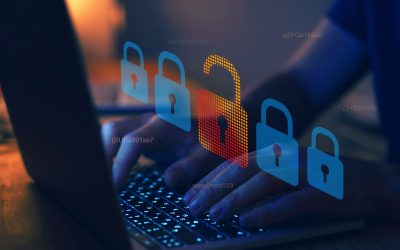Could Someone Be Monitoring Your Computer?
5 Ways to Make Sure No One is Monitoring Your Computer
Method 1 – Virus and Malware Scan
If something has been installed and even if it’s much hidden in the system, scanning your computer with multiple virus, anti-malware, and anti-rootkit programs could possibly find it. If the program installed is really sneaky, it may even have certain ways to add itself to the exception list in your anti-virus program. A better way to scan is to perform an offline scan of Windows. This basically means you scan for viruses before Windows even loads up. Also, install some good spyware and malware removal software that runs in real-time. If you find absolutely nothing performing all these scans, then your next step is to really ensure Windows has not been comprised in other ways. (5 Ways to Make Sure No One is Monitoring Your Computer)
Method 2 – Clean/Repair Install Windows
As I mentioned above, there are ways to monitor a computer without necessarily installing a program that is considered a virus. In these types of cases, unless you are really technically-savvy, you won’t be able to figure out if you’re being monitoring or not. However, you can still do something about it. In Windows, you can perform a clean install or a repair install. Clean install will wipe the operating system and all data and start you from scratch. A repair install is another option that basically resets Windows, but maintains all your data and programs.
I recommend doing a clean install if you really think someone is monitoring you. Everything is gone and therefore your system will be absolutely clean with no chance of being monitoring from the computer itself. There are lots of guides online on performing a clean install, which might not be a bad idea anyway if you have never done it before.
Method 3 – Reset and Secure Wireless Router
The other weak point when it comes to being monitored is the wireless router. Most people don’t worry about that too much, but it’s one of the easiest things to hack into and a lot of times someone can gain access to it without even needing to perform a hack. For example, a lot of people secure their wireless networks and think that the network is highly secure. Yes, it’s true that the network cannot be instantly accessed by anyone trying to connect, but did you remember to set a password on your router web admin page?
If you didn’t set a password for the admin web page for your router, anyone could just plugin their computer directly to the router and change all the settings to what they desire. I’ve also learned that the people most likely to monitor you are the people who are fairly close and have access to things like your computer or your router. So what can you do?
Go ahead and reset the wireless router completely. Usually there is a reset button on the back of the router that you can hold for 10 to 15 seconds that will reset it. Any configured settings will be lost and everything will be back to the factory default. So if someone managed to change the DNS server or something else, it’ll all be gone. At this point, you want to do two things: first, secure the wireless network using WPA2 with AES or TKIP and then set a password for your router. All routers come with default usernames and passwords, which should be changed immediately.
Method 4 – Use a Different Network
A lot of times when someone is monitoring your computer, it usually is dependent on the network you are connected too. For example, someone may have installed a key logger program that uploads data to another computer on the same network. Or there may be a program running on another computer that listens and waits for data to be sent to it from the monitored computer.
In these types of cases, you can try using a different network. For example. If you’re using the wireless network at your home. You can try connecting your laptop or computer to the Internet using a tethered phone connection. I know at my office, they had a corporate network spying tool. I used to bypass it by disconnecting my computer from the corporate network and then using my smartphone. By connecting it to my computer via USB I could Access the internet that way.
This won’t ensure you are not being monitored in all cases. It does help prevent some types of monitoring depending on how the person set it up.
Method 5 – Unplug or Disconnect
Lastly, you can always just unplug your computer or disconnect your machine from the network. Not the ideal solution obviously, but it will ensure that no one is monitoring you. Basically, it’s good to unplug and then follow the other methods mentioned above. In case someone has a program where they can see your desktop or computer remotely, then disconnecting will obviously prevent them from seeing what’s going on.
Overall, I have learned that trying to figure out the source of monitoring is too hard unless you really are a computer geek. The best thing to do if you feel you’re being monitored is to reset all your current systems. The computer and wireless network are the main avenues to access your computer. If you reset those, you can be pretty confident knowing you’re not being monitored anymore.
Want more Info?
Additional Online Resources:
- https://www.safehorizon.org/get-help/stalking/#overview/
- https://www.rd.com/advice/red-flags-of-cellphone-spying/
- https://www.apc.org/en/pubs/issue/how-avoid-becoming-cyberstalking-victim
- https://www.tripwire.com/state-of-security/security-awareness/what-cyberstalking-prevent/
- https://us.norton.com/internetsecurity-how-to-how-to-protect-yourself-from-cyberstalkers.html
- http://archive.boston.com/ae/books/gallery/cyber_safety/
- https://pvteyes.com/6-ways-avoid-cyberstalking-victim/
- https://www.siue.edu/police/safety/tips-stalking.shtml
- https://www.getsafeonline.org/protecting-yourself/cyberstalking/
Was “Could Someone Be Monitoring Your Computer?” Helpful? Any Tips or Tricks you would like to ad?



